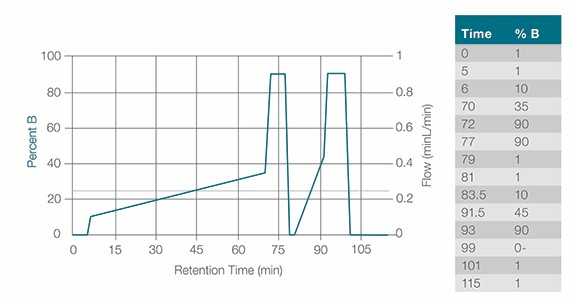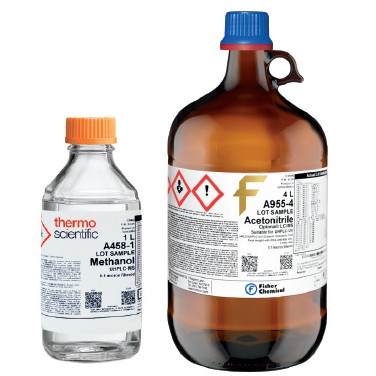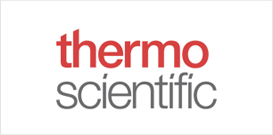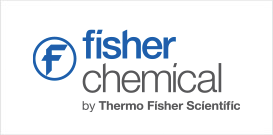Chemicals for LC-MS Biopharmaceutical Applications
LC-MS techniques, which couple liquid chromatography (LC) with mass spectrometry (MS), have increasingly become the method of choice for characterizing biopharmaceutical drugs. Mobile phase solvents and reagents must have low organic impurities to reduce interference with detection by electrospray (ESI) MS.
Analytical Methods
Biopharmaceutical drugs are therapeutic proteins with far more complex structures than small-molecule drugs. At the structural level, protein post-translational modifications (PTMs), which can arise at different stages of manufacturing and storage, can impact drug efficacy and safety. PTMs are therefore classified as critical quality attributes (CQA) and must be monitored and controlled.
LC-MS is used to understand the structure of protein-based drugs, including:
- Amino acid sequencing for peptides and proteins
- Profiles of host cell proteins (HCPs) and other process-related impurities
- Disulfide bond mapping
- N-glycan profiles of monoclonal antibodies (mAbs)
- Oligonucleotide sequencing
The combined power of LC separation and the sensitivity and specificity of MS detection makes LC-MS the best choice for mapping peptides to detect multiple PTMs, also called the multi-attribute method (MAM) workflow. Critical to the MAM workflow is the separation of various peptides from the digested therapeutic protein. This is typically achieved using a long LC gradient of water and acetonitrile, with formic acid added as a modifier. (See Figure 1.)

Figure 1: Typical LC gradient in a MAM workflow for the separation of NIST mAb peptides with a binary mobile phase: B: 0.1% formic acid in acetonitrile (Cat. No. LS120).
High-Purity Solvents and Reagents
Fisher Chemical Optima grade LC-MS solvents meet your purity needs for LC-MS analysis. Convenient, ready-to-use LC-MS blends are precisely mixed for lot-to-lot consistency and are quality tested using LC-MS. Thermo Scientific UHPLC-MS grade solvents meet even more stringent specifications for your most-demanding analyses. Both LC-MS and UHPLC-MS grade solvents and blends are tested to confirm low organic impurity levels to minimize interference and ion suppression.
These high-purity LC-MS reagents also have extremely low metal impurity levels. Trace metal impurities can cause poor peak shape, peak tailing, and diminished recovery when metal-ion mediated adsorption occurs with the column media. Sodium (Na+), potassium (K+), and other alkali metal ions are electrostatically attracted to the negative charges of carboxyl group of C-terminal amino acids in peptides and proteins or the polyanionic backbone of oligonucleotides. The Na+ and K+ adducts decrease overall sensitivity and compromise peptide identification.
All Thermo Scientific LC-MS grade chemicals strictly control trace metal contamination during production, which is confirmed with ICP-MS testing. Table 1 displays a comparison of impurities in pre-blended LC-MS grade water (with 0.1% formic acid) among four competitive brands.
Purity grades for every LC-MS application are available through the Fisher Scientific channel.
Table 1. Metal Ion Levels (ppb) in LC-MS Grade Water with 0.1% FA from Four Suppliers
| Metal Ion | Cat. No. LS118 | Competitor M | Competitor H | Competitor J |
|---|---|---|---|---|
| Na | ≤50 | ≤700 | ≤5,000 | ≤50 |
| K | ≤50 | ≤40 | ≤2,000 | ≤50 |
| Mg | ≤10 | ≤40 | ≤500 | ≤50 |
| Ca | ≤50 | ≤50 | ≤500 | ≤50 |
Solvents and Blends
| Grade | Description | Packaging | Quantity | Cat. No. |
|---|---|---|---|---|
Optima LC-MS | Acetonitrile | Amber Glass Bottles | 500 mL, 1 L, 2.5 L, 4 L | A955 |
| Methanol | Amber Glass Bottles | 500 mL, 1 L, 2.5 L, 4 L | A456 | |
| Water | Amber Glass Bottles | 500 mL, 1 L, 2.5 L, 4 L | W6 | |
| 2-Propanol | Amber Glass Bottles | 500 mL, 1 L, 2.5 L, 4 L | A461 | |
UHPLC-MS | Acetonitrile | Clear Glass Bottles | 1 L | A956-1 |
| Methanol | Clear Glass Bottles | 1 L | A458-1 | |
| Water | Clear Glass Bottles | 1 L | W8-1 | |
Optima LC-MS Blends | Acetonitrile with 0.1% FA | Amber Glass Bottles | 500 mL, 1 L, 2.5 L, 4 L | LS120 |
| Acetonitrile with 20% Water and 0.1% FA | Amber Glass Bottles | 500 mL | LS122-500 | |
| Acetonitrile with 0.1% TFA | Amber Glass Bottles | 500 mL, 1 L, 2.5 L, 4 L | LS121 | |
| Acetonitrile with 0.05% TFA | Amber Glass Bottles | 4 L | LS1174 | |
| Water with 0.1% FA | Amber Glass Bottles | 500 mL, 1 L, 2.5 L, 4 L | LS118 | |
| Water with 0.1% TFA | Amber Glass Bottles | 500 mL, 1 L, 2.5 L, 4 L | LS119 | |
| Water with 0.05% TFA | Amber Glass Bottles | 4 L | LS115-4 | |
Optima LC-MS Additives | Formic Acid | Poly Bottles | 50 mL | A117-50 |
| Ampules | 0.5, 1, 2, 10 × 1 mL | A117 | ||
Acetic Acid | Poly Bottles | 50 mL | A113-50 | |
| Ampules | 0.5, 1, 2, 10 × 1 mL | A113 | ||
Trifluoroacetic Acid | Amber Glass Bottles | 50 mL | A116-50 | |
| Ampules | 0.5, 1, 2, 10 × 1 mL | A116 | ||
| Ammonium Acetate | Glass Bottles | 50 g | A114-50 | |
| Ammonium Formate | Glass Bottles | 50 g | A115-50 |
Installation Kit
| Description | Cat. No. |
|---|---|
UHPLC-MS Reagent Installation Kit for New LC/MS Systems, Includes:
| UHPLCMSKIT |

Content provided by:




